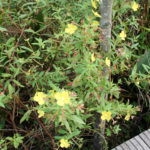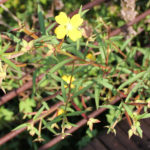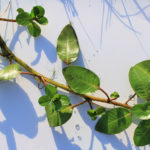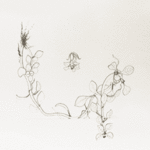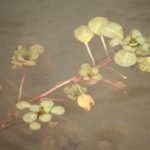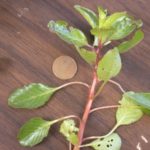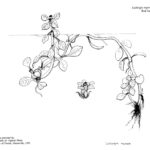Ludwigia spp.
USDA, NRCS. 2018. The PLANTS Database (http://plants.usda.gov, 28 March 2018). National Plant Data Team, Greensboro, NC 27401-4901 USA.
Illustration courtesy of University of Florida/IFAS Center for Aquatic and Invasive Plants. Used with permission.
What is Water Primrose?
Physical Characteristics
Leaves:
- Oval- or sword-shaped
- Up to 6 inches long
- Covered on both sides by small, soft hairs
Flowers:
- Flower in all seasons, except winter
- 4-5 petals
- Yellow in color
Stem:
- Branched
- Sometimes covered in long hairs
- Spongy when in water
Where Does it Grow?
EDDMapS. 2024. Early Detection & Distribution Mapping System. The University of Georgia – Center for Invasive Species and Ecosystem Health. Available online at http://www.eddmaps.org/; last accessed Apr 5, 2024.
Water primrose can be found in shallow marshes, ponds and ditches.
Pros and Cons of Water Primrose
Ducks and other waterfowl will consume the seeds of water primrose. Submerged portions of all aquatic plants provide habitats for many micro and macro invertebrates. These invertebrates in turn are used as food by fish and other wildlife species (e.g. amphibians, reptiles, ducks, etc). After aquatic plants die, their decomposition by bacteria and fungi provides food (called “detritus”) for many aquatic invertebrates.
What Type of Water Primrose Do I Have?
There are 12 species of water primrose that are common in Texas. Click on the buttons to learn more about each individual species.
